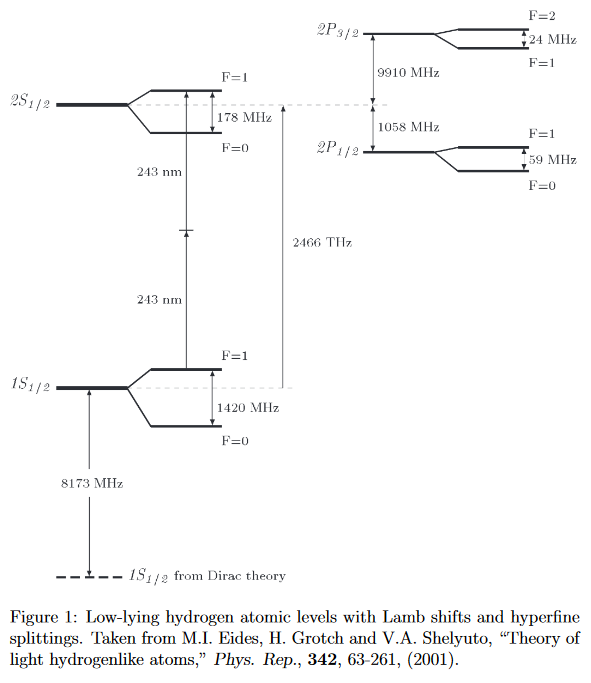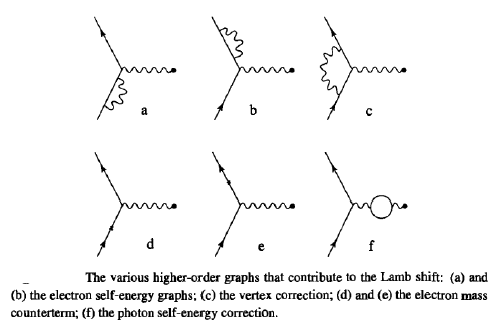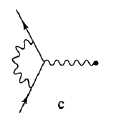nLab Lamb shift
Context
Physics
physics, mathematical physics, philosophy of physics
Surveys, textbooks and lecture notes
theory (physics), model (physics)
experiment, measurement, computable physics
-
-
-
Axiomatizations
-
Tools
-
Structural phenomena
-
Types of quantum field thories
-
Algebraic Quantum Field Theory
algebraic quantum field theory (perturbative, on curved spacetimes, homotopical)
Concepts
quantum mechanical system, quantum probability
interacting field quantization
Theorems
States and observables
Operator algebra
Local QFT
Perturbative QFT
Contents
Idea
The Lamb shift is a tiny shift in the energy spectrum of excitations of the electron orbits in the hydrogen atom.

This is a “fine structure” effect not seen by the quantum mechanics of the electron, but resulting from radiative corrections involving photon emission/absorption only seen by regarding the electron in perturbative quantum field theory, here in quantum electrodynamics.
The Lamb shift may be attributed to 1-loop Feynman diagram-contributions giving “radiative corrections” to the basic tree level electron-photon vertex that describes the basic interaction of the electron with the background electromagnetic field, via the electron-photon vertex, hence called vertex corrections and governed by the coupling constant of quantum electrodynamics, the fine structure constant.

(Here the dot on the right is the external vertex for the background electromagnetic field.)
The main contribution (often referred to as the vertex correction) is due to the radiative correction induced by the electron emitting a virtual photon, then interacting with the background electromagnetic field, and and finally re-absorbing the virtual photon; described by this Feynman diagram:

Historically, the observation of the Lamb shift in experiment catalyzed the theoretic development of quantum electrodynamics specifically and of perturbative quantum field theory generally.
Related concepts
References:
Named after Willis Lamb, who had worked on war-time radar technology during the WWII, came back to his lab, applied his radar technology to the hydrogen atom and found the effect:
- Willis Lamb, Robert C. Retherford, Fine Structure of the Hydrogen Atom by a Microwave Method, Phys. Rev. 72, 241 – Published 1 August 1947 (doi:10.1103/PhysRev.72.241)
Texts discussing the proper derivation in terms of Feynman diagrams include
-
Michael Eides, Howard Grotch, Valery A. Shelyuto, Theory of Light Hydrogenlike Atoms, Phys. Rept. 342:63-261, 2001 (arXiv:hep-ph/0002158)
-
Steven Weinberg, section 14.3 of The quantum theory of fields - Volume I: Foundations, Cambridge 1995
a useful lightning survey is in
- Mojtaba Alipour, Lamb Shift, 2014 (pdf)
Many lecture notes instead present a heuristic plausibility argument in terms of oscillations of the electron picked up from “vacuum fluctuations” of the background electomagnetic field:
- Hitoshi Murayama, section 1.1 of Quantum Electrodynamics (pdf)
See also
- Wikipedia, Lamb shift
Discussion of the Lamb shift in experiment includes
Last revised on February 6, 2018 at 14:47:51. See the history of this page for a list of all contributions to it.